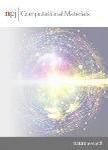Hyperactive learning for data-driven interatomic potentials
作者机构:University of CambridgeCambridge CB21PZUK University of BirminghamBirmingham B152TTUK University of British ColumbiaVancouverBC V6T 1Z2Canada
出 版 物:《npj Computational Materials》 (计算材料学(英文))
年 卷 期:2023年第9卷第1期
页 面:599-612页
核心收录:
学科分类:081203[工学-计算机应用技术] 08[工学] 0835[工学-软件工程] 0812[工学-计算机科学与技术(可授工学、理学学位)]
基 金:G.C.and C.v.d.O.acknowledge the support of UKCP grant number EP/K014560/1.C.v.d.O would like to acknowledge the support of EPSRC(Project Reference:1971218)and Dassault Systèmes UK.C.O acknowledges support of the NSERC Discovery Grant(IDGR019381) the NFRF Exploration Grant GR022937.The authors would also like to thank Ioan-Bogdan Magdău for discussions on modelling condensed phase polymers
主 题:starting generating consuming
摘 要:Data-driven interatomic potentials have emerged as a powerful tool for approximating ab initio potential energy *** most time-consuming step in creating these interatomic potentials is typically the generation of a suitable training *** aid this process hyperactive learning(HAL),an accelerated active learning scheme,is presented as a method for rapid automated training database *** adds a biasing term to a physically motivated sampler(*** dynamics)driving atomic structures towards uncertainty in turn generating unseen or valuable training *** proposed HAL framework is used to develop atomic cluster expansion(ACE)interatomic potentials for the AlSi10 alloy and polyethylene glycol(PEG)polymer starting from roughly a dozen initial *** HAL generated ACE potentials are shown to be able to determine macroscopic properties,such as melting temperature and density,with close to experimental accuracy.



